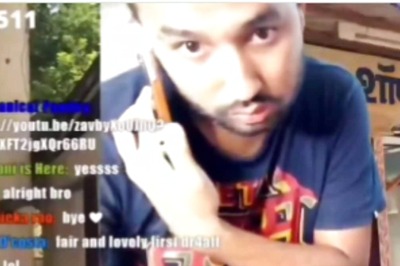
views
THIRUVANANTHAPURAM: If the Moon coming between the Earth and the Sun is lunar eclipse, shouldn’t Venus coming between the Earth and the Sun be also a tiny eclipse? The difference is that Venus will block only about 0.1 per cent of the Sun’s light from reaching Earth. And when viewed from the Earth, Venus appears to move across the Sun’s face like a small dark ‘bindhi’ dot, making it more of a transit than an eclipse. A very rare astronomical event, a Venus transit will occur on June 6 which can be viewed from the State, monsoon clouds permitting. Though the journey of the Venus begins at 3.30 am on June 6, the transit will become visible only after sunrise, at approximately 5.40 am in the city. Venus will trek over the Sun’s disk and will complete its transit by 10.10 am. This exciting celestial event is visible from all seven continents, and skywatchers are eagerly counting the days as Venus won’t transit the Sun for more than a hundred years from now. So no one alive today is likely to see the next transit. Transits of Venus are very rare, coming in pairs, separated by eight years, at an interval of 105 years. This June’s transit, the second of a 2004-2012 pair, won’t be repeated until the year 2117. The creative photographers among you can have a field day too. But take care of your eyes, do not stare at the Sun. Venus covers too little of the solar disk to block the blinding glare. Instead, use some type of projection technique or a solar filter. The Breakthrough Science Society, a voluntary organisation committed to the cause of science, culture and scientific outlook, has arranged for safe sun filters made of black polymer. All that you need to do to get these filters is pick up the phone and dial any of the following numbers: 9387110272, 9388864064, 9961124106, 9387224226 or 9645006152. The Breakthrough Society is also conducting classes on the topic prior to the transit. Breakthrough is also tying up with a lot of science clubs and educational institutions to facilitate the viewing of the celestial drama. Anyone interested in getting Breakthrough’s help for either viewing the transit or knowing more about it can contact any of the numbers given above, informed the state co-ordinator, G S Padmakumar. The last Venus transit happened in 2004, the first of the 2004-2012 pair. The 2012 one is expected to be better as cameras and solar telescopes have improved. Moreover, NASA’s Solar Dynamics Observatory will produce Hubble-quality images of this rare event from Earth’s perspective. Transits of Venus first gained worldwide attention in the 18th century. In those days, the size of the solar system was one of the biggest mysteries of science. The relative spacing of planets was known, but not their absolute distances. Venus was the key, thought astronomer Edmund Halley. He realised that by observing transits from widely-spaced locations on Earth it should be possible to triangulate the distance to Venus using the principles of parallax. The idea triggered scientific expeditions across the world to view transits from various locations. In the 21st century, the interests are different. When a planet crosses in front of its parent star, there is a minute dip in the star’s apparent brightness. Identifying such dips is a useful method of finding planets orbiting other stars, and studying their properties.(Keep track of the Sci-bug, every Saturday. And do not forget to give us a feedback on [email protected])



















Comments
0 comment